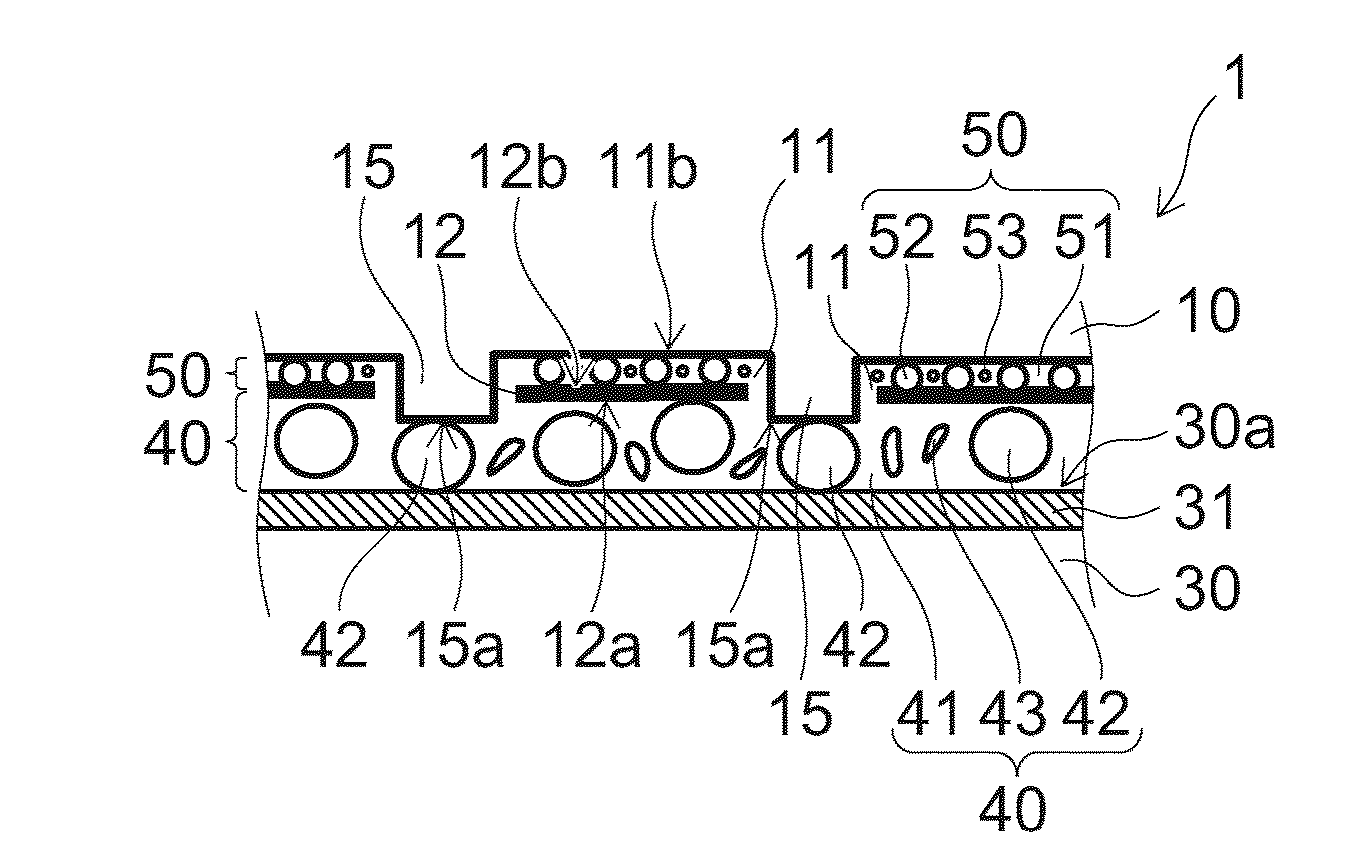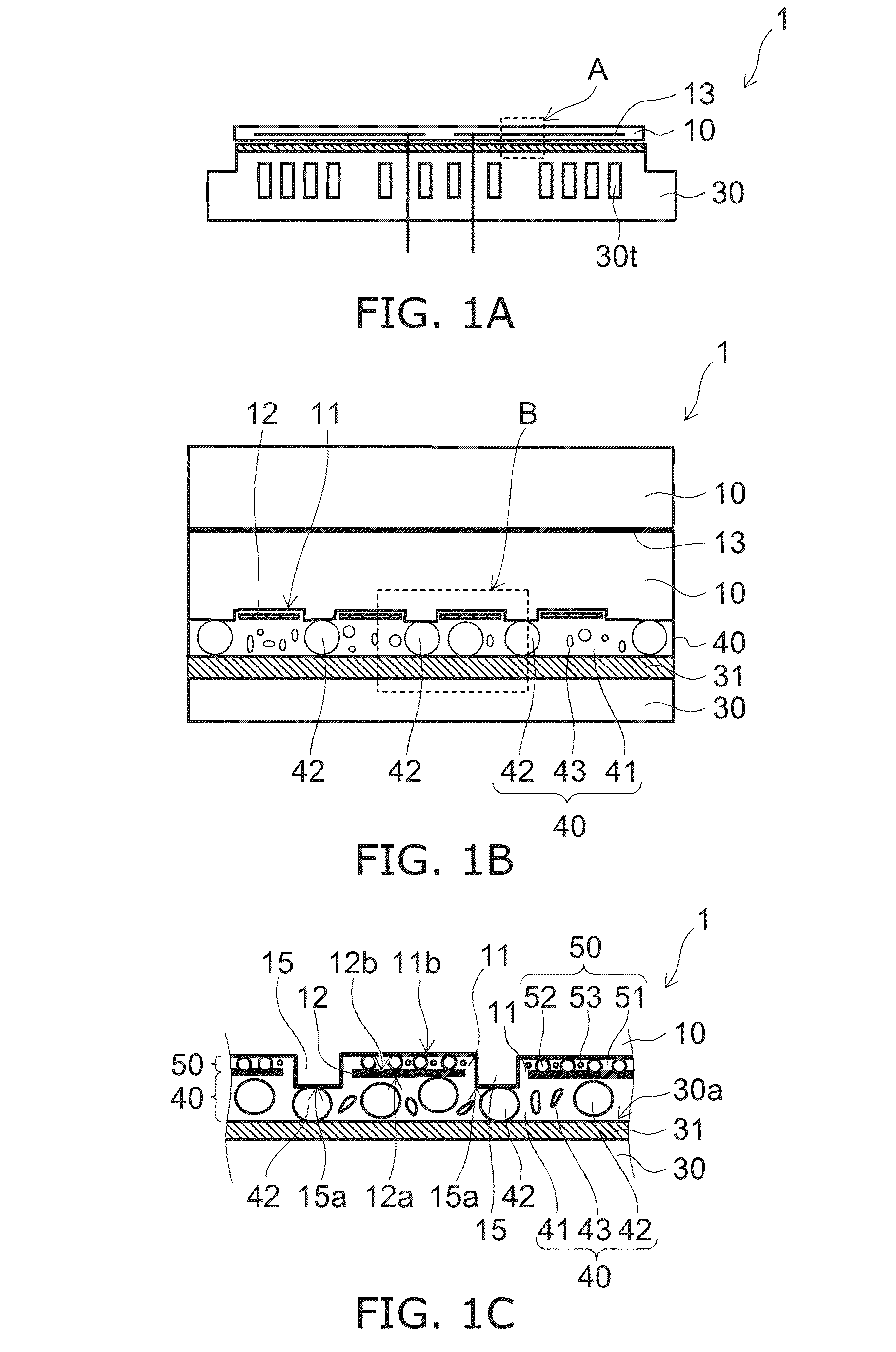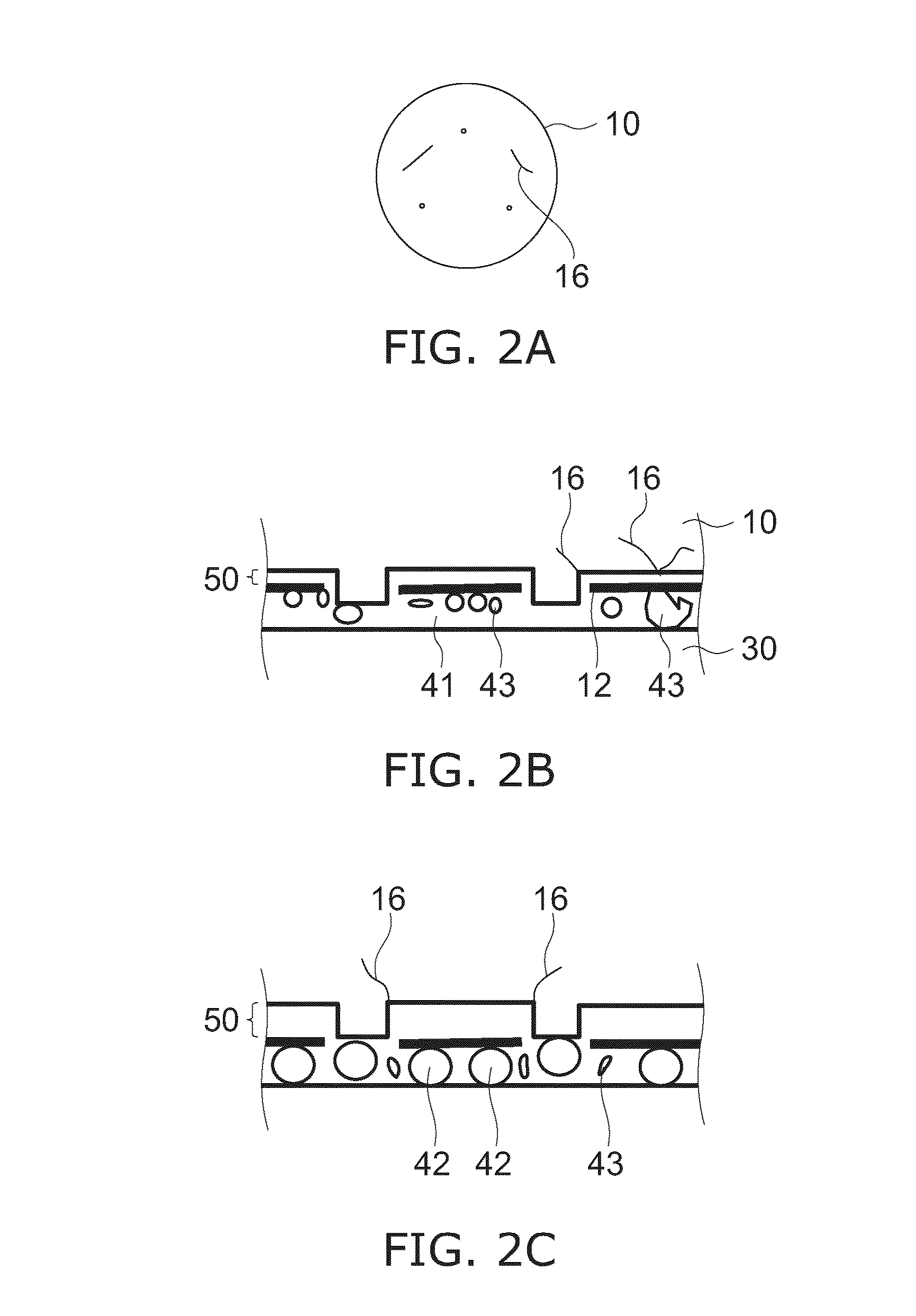Electrostatic chuck
a technology of electrostatic chucks and chucks, applied in the direction of electrostatic holding devices, manufacturing tools, mechanical apparatus, etc., can solve problems such as inability to mitigate, and achieve the effect of suppressing crack generation and rapid heat and cooling of processing target substrates
- Summary
- Abstract
- Description
- Claims
- Application Information
AI Technical Summary
Benefits of technology
Problems solved by technology
Method used
Image
Examples
Embodiment Construction
[0082]Detailed embodiments will be described hereinafter with reference to drawings. The embodiment described below also includes a description of means for resolving the problem given above.
[0083]First, descriptions will be given of terms used in the embodiment of the invention.
(Ceramic Plate)
[0084]The ceramic plate is the stage of the electrostatic chuck on which the processing target substrate is placed. The ceramic plate is a ceramic sintered material designed with a uniform thickness. The flatness of the major surface of the ceramic plate is designed to be a predetermined range. If the respective thickness is uniform or the flatness of the respective major surface is secured, then it is unlikely that local stress will be applied to the ceramic plate at the time of hot press curing of the bonding agent. Further, the thickness of the bonding agent interposed between the ceramic plate and the temperature regulating plate can be controlled by the average diameter of the spherical f...
PUM
| Property | Measurement | Unit |
|---|---|---|
| diameter | aaaaa | aaaaa |
| thickness | aaaaa | aaaaa |
| surface roughness | aaaaa | aaaaa |
Abstract
Description
Claims
Application Information
 Login to View More
Login to View More - R&D
- Intellectual Property
- Life Sciences
- Materials
- Tech Scout
- Unparalleled Data Quality
- Higher Quality Content
- 60% Fewer Hallucinations
Browse by: Latest US Patents, China's latest patents, Technical Efficacy Thesaurus, Application Domain, Technology Topic, Popular Technical Reports.
© 2025 PatSnap. All rights reserved.Legal|Privacy policy|Modern Slavery Act Transparency Statement|Sitemap|About US| Contact US: help@patsnap.com



